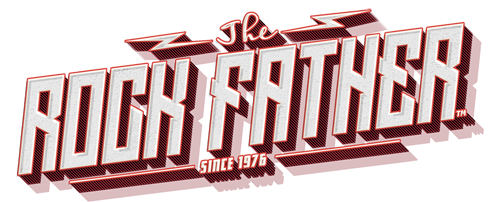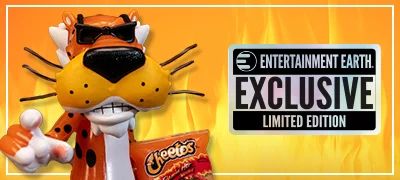Not long ago, on the Walt Disney Studios lot in Burbank, I had a chance to take a look at a nice chunk of footage from Walt Disney Animation Studios’ 57th feature, Ralph Breaks the Internet. Given the long development and production time required for an animated feature on this scale, the follow-up to 2012’s Wreck-It Ralph is an unusually timely story that arrives just as retro gaming is reaching its peak as we enter a holiday season where some of this year’s must-have gifts are firmly-rooted in a simpler time with an arcade past. Just as real-life gamers are longing to go back in time, Wreck-It Ralph (John C. Reilly) and Vanellope von Schweetz (Sarah Silverman) are headed for the future… but the future is now. From Litwak’s Arcade to the internet, the creative team behind the film had a huge task ahead of them in order to build and populate a digital world that could have believably been expanding for decades.
STORY DOWNLOAD
You can’t just make a movie without a great story (well, you could – but it wouldn’t be very good), and for Ralph Breaks the Internet, Josie Trinidad (Head of Story), Jason Hand (Story Artist) and Natalie Nourigat (Story Artist) worked alongside the filmmakers to both develop a new adventure for Ralph and Vanellope, but also come up with a meaningful translation from paper to screen that would see the internet come to life like never before. What exactly should Ralph be doing? It can’t always be cat videos or unboxings (or can it?)…

THE WEB’S WIDE WORLD
After developing a solid story that would send our heroes on a mission far beyond Litwak’s Family Fun Center to enter the digital unknown in search of a real-life part for a broken machine that exists in the physical world, Matthias Lechner (Art Director, environments), Larry Wu (Head of Environments) and Ernie Petti (Technical Supervisor) had to figure out how the internet would be constructed. After a visit to one of the most important buildings in the world when it comes to the internet – One Wilshire – the reality is that what powers the real-life web is pretty boring in that it’s just an endless array of wires and routers. But for Ralph’s world, the internet would become something more intriguing… imagine an endless city that’s been build upon since the 90s, and at the top are the shiny new sites and apps that are at the cutting edge of technology, but beneath them are the dirty, dusty and forgotten relics of what’s come before (shout-out to Geocities and Netscape!).

POPULATING THE INTERNET
With the massive world established and built, Cory Loftis (Production Designer), Dave Komorowski (Head of Characters and Technical Animation), Renato dos Anjos (Head of Animation) and Moe El-Ali (Crowds’ Supervisor) were tasked in populating the vast space. To create thousands of characters, the team started by pulling character renders from all the other Disney Animation films into the project, after which they were able to tweak things like color and clothing for a unique look. But this was just the background noise, and as technology has improved greatly since the first film, this meant there was the opportunity to enhance and update the hero characters with modern definition and detail. And when it comes to detail, just look at this 9-frame progression…
Two very important distinctions that came from the story (first touched upon here) are that the Netizens are the digital creatures that actually live and work inside the internet, while the Net Users are the temporary visitors who are just stopping by – the digital avatars of everyday humans like you and I who log on, search for information, visit websites and then disappear. While the Netizens appear more organic and have distinct personalities, the avatars are simpler creatures with blocky heads (very much akin to a Funko Pop! Vinyl figure) who are more limited in expression, with their emotions guided by actions like we’d see on our phones (“like,” “heart,” etc).

With millions of characters, this also posed the challenges of location – with characters reflecting their location, from familiar sites and apps like eBay and Snapchat to the seedy underbelly of the deep web/dark net (pictured top). It all adds a layer or realism to a realm of fantasy.
Ralph Breaks the Internet:
Ralph Breaks the Internet leaves Litwak’s video arcade behind, venturing into the uncharted, expansive and thrilling world of the internet—which may or may not survive Ralph’s wrecking. Video game bad guy Ralph and fellow misfit Vanellope von Schweetz must risk it all by traveling to the world wide web in search of a replacement part to save Vanellope’s video game, Sugar Rush. In way over their heads, Ralph and Vanellope rely on the citizens of the internet—the netizens—to help navigate their way, including a webite entrepreneur named Yesss (voice of Taraji P. Henson), who is the head algorithm and the heart and soul of trend-making site “BuzzzTube.”
Directed by Rich Moore (“Zootopia,” “Wreck-It Ralph”) and Phil Johnston (co-writer “Wreck-It Ralph,” “Cedar Rapids,” co-writer “Zootopia,”), and produced by Clark Spencer (“Zootopia,” “Wreck-It Ralph,” “Bolt”), Ralph Breaks the Internet is in theaters everywhere on November 21, 2018.
Animation photos courtesy of Disney. Office shots: ©Disney/Alex Kang.



